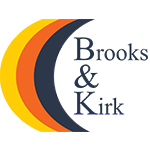Assessment Methods – What Exactly Are They?
The main part of an assessors job role is to assess learners. To assess your learners, you’ll need to use a variety of different assessment methods. Here we have a handful of the main assessment methods you will need as an NVQ / On-Programme Assessor. You’ll be putting at least half of these assessments in to practice during your assessor course if you’re a Brooks and Kirk trainee assessor!
- Professional Discussion
- Questioning
- Projects and Assignments
- RPL (Recognition of Prior Learning)
- Witness Testimony
- Work Products
Assessment Methods
Observation
If you’re a qualified assessor and gained your qualification with us at Brooks and Kirk, you will know exactly what an observation is from your CAVA study day. For those of you who aren’t so sure, an observation is quite self-explanatory; the Assessor watches (or, observes) their candidate carrying out a task or presenting a specific skill.
These tasks/skills have to be relevant to the criteria the Assessor is looking for. Observation is the probably the most popular of the assessment methods. It’s reliable and an easy way to cover lots of criteria in a fairly short amount of time. This reduces stress levels from the learner, and saves your time as the assessor. Hypothetically speaking, your learner could cover everything out of a whole unit in just one observation.
Professional Discussion
Professional discussions are a great assessment method for a candidate to show they have a really good level of understanding of the criteria. Not to be confused with the questioning assessment method (which will be explained shortly), professional discussions are where the Assessor has a chat with the candidate about the criteria, to try and get to grips with their understanding of it. You can guarantee a quality level of assessment evidence from a professional discussion, as you can prove the knowledge is organic straight from the candidates themselves.
It’s easy for a professional discussion to slip into a Q&A session. If your learner won’t engage in the conversation with you, or is giving you ‘yes/no’ answers, then you’re not having a professional discussion; you’re having a question & answer session. So, it’s really important not to as that is a completely different assessment method, which we’ll go on to now…
Questioning / Question & Answer
As mentioned before, and not be confused with the professional discussion assessment method, questioning is pretty much what it says on the tin. Asking your candidate questions to figure out their understanding of the criteria.
Now, this can be oral or written questioning. It can even be in the form of quizzes or exams. It will show you exactly what your candidate does and doesn’t know, and therefore is a great way to look at areas for improvement and how to move forward from then on.
Projects and Assignments
By setting projects and assignments, you can gather a lot of information on your candidate’s knowledge in one document. The project/assignment assessment method can be put into practice with reports or essays, perhaps even some relevant research for the candidate to cover. Any mistakes or parts that aren’t quite right from, for example, an essay, will highlight gaps in the candidate’s knowledge. This will allow you to support them with developing their knowledge further, so that all the necessary criteria can be covered at a later date.
Recognition of Prior Learning
Or, for short, RPL. This is one of the more popular assessment methods with candidates. RPL takes into consideration any qualifications, awards, or certificates that the candidate has gained prior to this qualification. It involves you, as the Assessor, cross-referencing any previous work with the criteria that you are looking for to see if the learner has already covered it before. This is why it’s a favourite with candidates. Simply because it may mean less work for them to do if they have already covered it before.
This assessment method tends to be quite tricky from the assessor’s point of view. There are many questions to be asked. Is the prior learning actually relevant? How long ago did they complete this? Does it prove they still have the required level of knowledge? Generally, assessors will ask for learners to provide a statement when using the RPL assessment method. The statement will back up what they have studied previously, and how this means they have met the criteria already.
Witness Testimony
As an Assessor, you’ll have to have a lot of trust in your candidate to use this assessment method. To get a valid Witness Testimony, you’ll require an occupationally competent professional who works with your candidate to, for example, write a report about a time they witnessed your candidate carry out a task/skill, and confirm their competence of them.
The candidate would also need to write a report on when they carried out this task or skill. Then, you as the Assessor would need to compare these with each other. If both reports describe the same situation perfectly, then it’s very likely to be a valid report that can be used to tick off certain assessment criteria.
Work Products
If your candidate is working in a job role relevant to their desired qualification (for example, an Apprenticeship), then it’s likely that they are producing work on a daily basis that could be used as evidence for some criteria. If the candidate is carrying out tasks that meet the criteria daily, why make them repeat it in an assignment? Not surprisingly, this is another of the more popular assessment methods in the candidate’s point of view; ‘two birds in one stone’?
A work product can be as simple as, for example, a business administration learner screenshotting emails to internal and external sources. Of course it depends on what the criteria is asking for, but if a screenshot can evidence ‘be able to’ criteria; then why not?
These are the main assessment methods used as a NVQ assessor or On-Programme assessor. There are strengths and limitations to all of these assessment methods, so take a look at our blog on Strengths and Limitations to Assessment Methods.
If you’re looking at becoming an Independent End-Point Assessor, there’s a strong chance you’ll run into some other assessment methods. To find out more about Assessment Methods Used in End-Point Assessment, take a look at our blog.
We hope you have found this useful. If you did, please help our team by answering our quick checkbox survey below.
Steve is a Chartered Manager and a Fellow of the Chartered Management Institute.
He provides Educational Consultancy to the 19+ sector as well as being an Assessor, IQA, EPA and Digital Marketing Professional. When not doing any of these he finds time, every now and then, to write blogs and articles.




